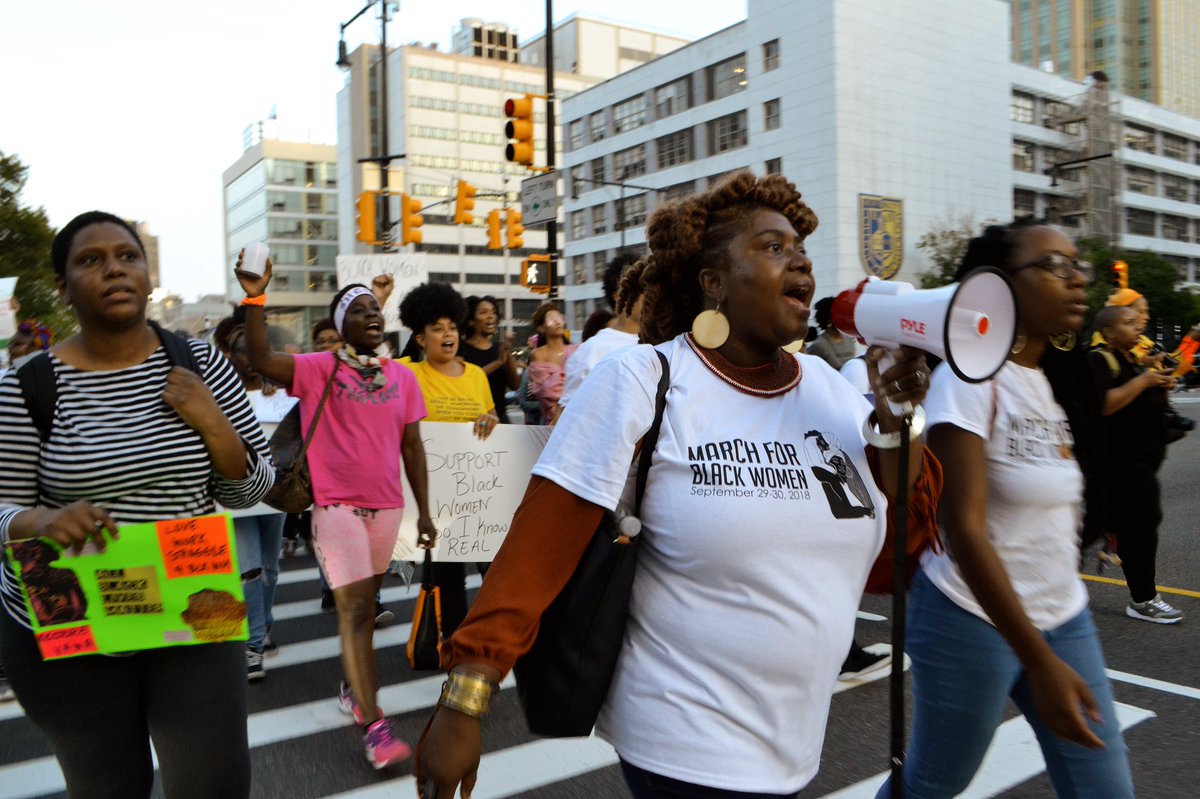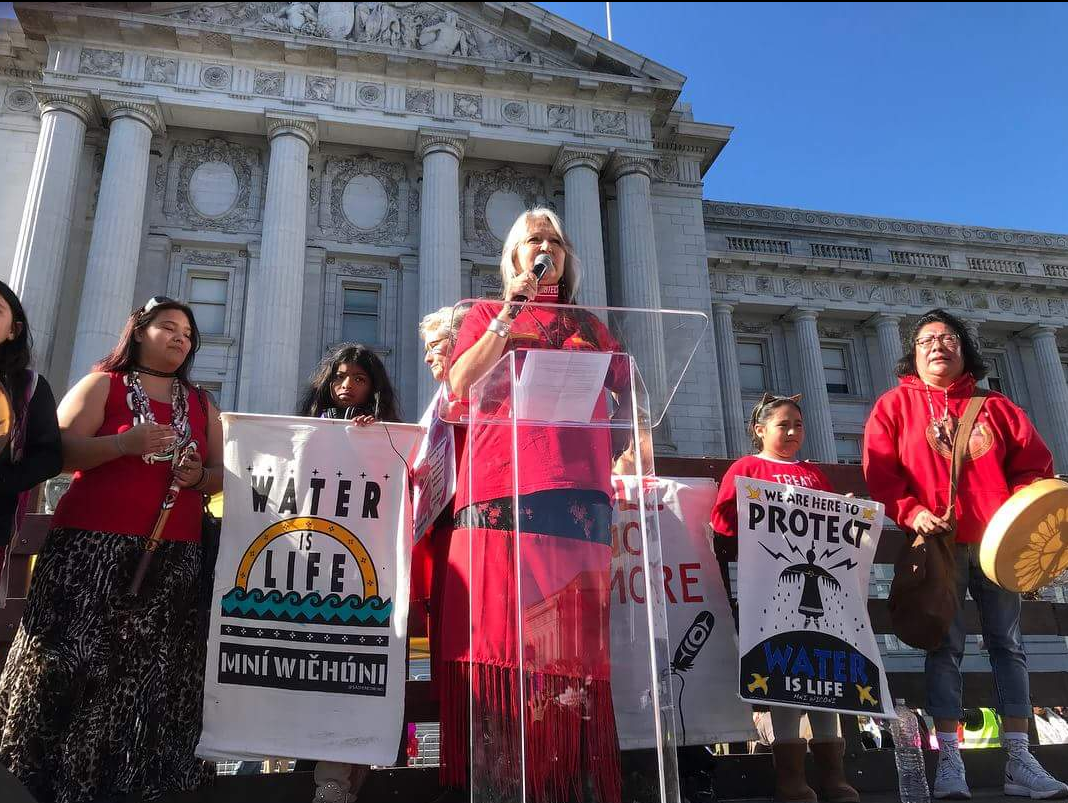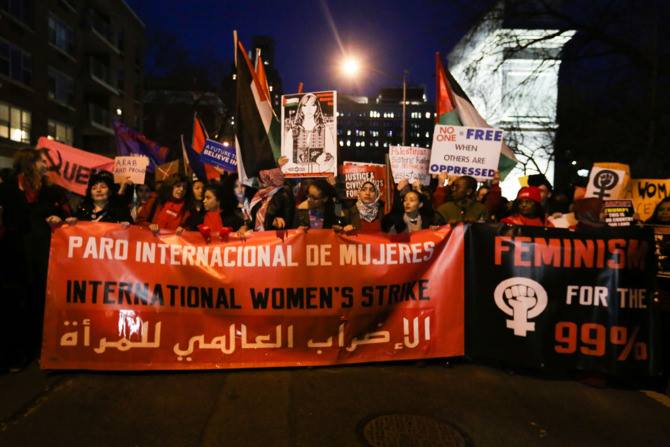Editors Note: This is an inaugural piece for our Women’s Movement Series that will curate articles written and supported by activists and advocates working to create a more inclusive, global women’s movement. It will run from October 2018 to January 2019. It seeks to amplify and highlight issues that need to be heard in our feminist movement.
[dropcap]A[/dropcap]fter the election of Donald Trump, millions of women marched in the United States and around the globe protesting the disenfranchisement of women. Largely heralded as a movement for and champion of women everywhere, the movement’s base provided an opportunity for women to organize and fight back against the Trump regime. However, despite its good intentions, the movement has largely become that of white, middle-class, cis-gender women, and the issues those most relevant to white women. And, although cast as a global movement, its issues are largely U.S.-centric.

The movement made activists out of bystanders, with thousands of new activists taking to the streets among Black, Indigenous and Women of Color (BIWOC ) who have been protesting and fighting for years. The women’s movement, particularly supported by Women’s March, continues to grow and receive spotlighted attention despite questions surrounding its inclusivity and willingness to share its platform.
“The potential is beyond what we could have ever imagined because we have ended the gender binary. We are seeing full transformation of gender relations, full transformation of how we identify and move and show up in the world.” Farah Tanis
Over the past few weeks, resistance against the appointment of Brett Kavanaugh, largely in the form of protests organized by the Women’s March, has been broadcasted on major news channels and Twitter. Thousands of retweets, mentions and replies lifted the #CancelKavanaugh efforts to the forefront of an already concentrated news cycle. Meanwhile, the Black Women’s March took place on September 29th with hardly a peep of support. Twitter was largely silent. Major news outlets were nowhere to be found.
S.T. Holloway, an activist and HuffPost contributor, noted the lack of representation at a previous Women’s March: “[I]n a sea of thousands, at an event billed as a means of advancing the causes affecting all women, the first and last time I heard “Black Lives Matter” chanted was when my two girlfriends and I began the chant.”
“Most people do not understand the critical times in which we are living.” Pennie Opal Plant
The resulting disconnect between the women’s movement we hoped for and the women’s movement as it stands today is blamed on a myriad of failures: the failure of white women to understand the history of women’s movements, the leadership of the Women’s March, the structural systems in place that allow certain women to be heard the loudest or the resulting feminism trend that sought to make millions off of merchandise touting feminist messaging. As a result, many issues have succumbed to the more accessible, trendier topics of female empowerment, reproductive rights and equal pay, leaving critical issues such as climate change, prison abolition, indigenous rights and labor rights behind.

Privilege and Power: How White Women’s Voices Silence
The women’s movement has largely focused on issues that impact white women – specifically: white women in the United States. It ignores systems rooted in white supremacy and racism that oppress BIWOC and the imperialist, neocolonial policies that the United States continues to enforce both at home and abroad. It assumes that all women are equal beneficiaries of progress. It ignores barriers to voting, a rallying call that has become even more prominent as midterms inch closer; it denies inclusion of immigrant and Native communities that have been disenfranchised by racist, nativist policies; it denies recognition of the disproportionate impact climate change has on communities of color. Pennie Opal Plant, a climate activist, rightfully points out that, while 50,000 individuals attended the Women’s March in San Francisco this year, only 30,000 individuals attended the March for Climate, Jobs & Justice, signaling that “most people do not understand the critical times in which we are living.”
The movement fails to recognize Tarana Burke as the creator of the #MeToo movement and fails to actively de-center white feminist issues while “white women who believe themselves to be just and ‘well-meaing,’ are also contributing to white supremacy.”
White bodies, cis-bodies, middle-class and able bodies move through the world differently all on their own. When these bodies enter the political arena, their voices are heard first. Because of this, the issues that consistently become centered in women-focused movements are usually dismantling rape culture, equal pay and diminishing the patriarchy. These issues ignore structural inequities and the fact that, even if these goals are achieved, the impact is felt differently across communities..
Just look at Sen. Susan Collins’ disappointing decision to vote to confirm Brett Kavanaugh. Collins cited the #MeToo movement and its importance in fighting against rape culture while simultaneously voting to uphold a system that primarily disenfranchises women that do not fit within the white, cis-gender and middle-class bubble Collins lives. Collins completed a critical step in promoting and ensuring the survival of toxic femininity and white supremacy. Vox host, Liz Plank, stated on Twitter: “The way white women accept to be used as pawns by a party that consistently strips their rights and minorities’ rights away cannot be overstated.”
Don’t forget: white women voted for Trump. As the women’s movement grows, the hypocrisy in the movement’s growth must be addressed: many of the white women touting themselves as activists were complicit in Donald Trump’s rise to power by remaining silent throughout his campaign. Many women became involved only after threats to reproductive rights became actualized. Some women are there for themselves. Others are there for all women. Many fail to actively include communities of color, LGBT community, immigrants or criminally convicted women.
“Collaboration and genuine coalition building, along with inclusion of community-identified leaders are critical in creating and including global grassroots movements.” Natasha Johnson
The women’s movement seen today is a co-opt of what BIWOC have been doing globally for centuries: combating gender violence and racial abuse and exploitation of labor. The ability of Western women to use the foundation laid by years of anti-imperialist, labor-focused, and abolitionist work to propel forward white feminist issues is a privilege experienced only by those whose identities are not at constant risk of state perpetuated violence. Our fragmentation in the women’s movement, Farah Tanis, co-founder and Executive Director of Black Women’s Blueprint, says, makes it harder to see progress. “People need to have more vision. Leadership,” she says, “needs to have a deeper understanding and embody what it means to fully commit yourself to liberation; for both ourselves and each other.” White women must do better at acknowledging the active silence they have expressed against issues impacting BIWOC. “Black women get no coverage, no attention. Our issues are out of sight and out of the mind of community leaders,” Tanis states.

“Women of color have actively fought for the rights and livelihoods of women for more than two centuries, yet their stories and contributions are often sidelined in the mainstream narrative of the feminist movement.” White feminism has become complicit in white supremacy and enshrining patriarchy even deeper, not only within the United States, but globally. Western feminism fails to recognize that the world cannot progress if only Western women are benefitting from movements. Natasha Johnson, founder of Globalizing Gender, cautions that movements like these are not sustainable. Without including women’s experiences, coopted movements “reek of colonialism, just in a new form.” Collaboration and genuine coalition building, along with inclusion of community-identified leaders, she says, are critical in creating and including global grassroots movements. “Movement building,” Natasha says, “is sustained by the recognition that often disparate, but equal parts make the whole.”
The potential of the women’s movement is revolutionary; “The potential is beyond what we could have ever imagined because we have ended the gender binary. We are seeing full transformation of gender relations, full transformation of how we identify and move and show up in the world,” Tanis says. “We’ve turned culture on its head, and that’s the potential of the women’s movement if we are to unite across race, class, sexuality to fight for each other’s rights.”
Simply put, the women’s movement can do better. To realize our revolutionary potential, we need to amplify the voices of grassroots feminists globally and from marginalized communities to determine our path forward.
If you would like to contribute or lend your perspective to the Women’s Movement Series, email us at editors@staging.lawatthemargins.com




